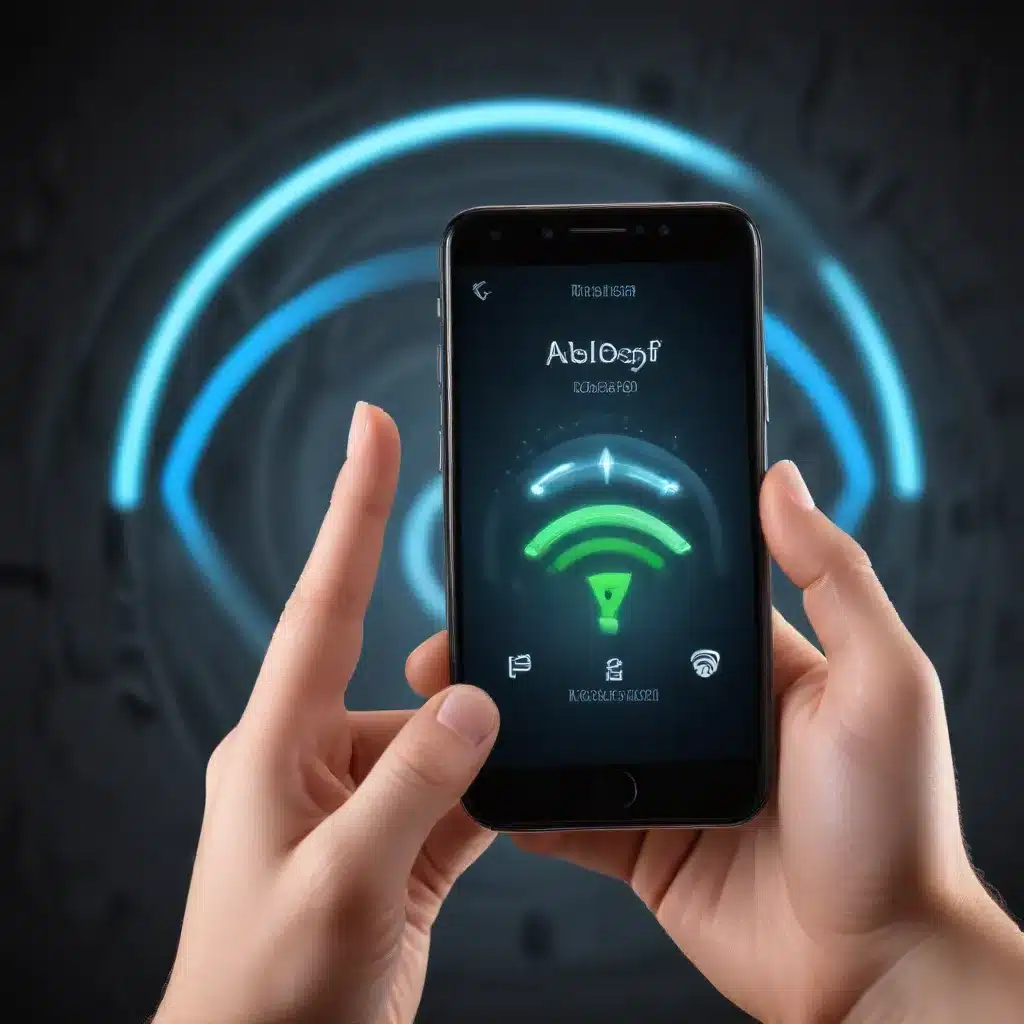
Understanding the Challenges of Mobile Hotspot Support
As an experienced IT professional, you know that providing reliable mobile hotspot connectivity can be a significant challenge, especially for organizations with a Bring Your Own Device (BYOD) program. The Android operating system, with its vast ecosystem of devices and varied carrier customizations, can make it tricky to support mobile hotspot functionality consistently.
One of the main issues is compatibility. Android hotspots can pose a significant security risk to hybrid and remote workforces, as they might expose the connected device to unauthorized access. An attacker could potentially intercept sensitive data transmitted over the hotspot or use it to launch attacks against other devices on the network. This is a critical concern for IT teams tasked with ensuring the security of their organization’s data and systems.
Another common problem is bandwidth limitations. Mobile hotspots are intended for situational internet access, not as a full-time substitute for a stable internet connection. When users connect multiple devices to an Android hotspot, the available bandwidth can quickly become overwhelmed, leading to slow speeds or even dropped connections. This can severely impact the productivity of remote and hybrid workers who rely on their mobile hotspot as a primary means of connectivity.
Battery drain is another challenge. Using an Android device as a hotspot can quickly deplete the device’s battery, especially if users keep it on for extended periods or connect multiple devices to it. This can significantly limit the usefulness of the hotspot, as the user may not have enough battery life to rely on it for their other essential functions.
Lack of user awareness regarding the security risks and data usage costs associated with mobile hotspots can also contribute to problems. Many users might not be aware of the security risks or the potential for high cellular data charges, leading to inadvertent exposure of sensitive information or unexpected billing surprises. Providing comprehensive user training and setting clear policies around mobile hotspot usage is crucial for IT teams to address these issues.
Troubleshooting Mobile Hotspot Connectivity Issues
To help remote and hybrid workers effectively utilize their Android device’s mobile hotspot, it’s essential for IT teams to have a solid troubleshooting process in place. Here are the steps you can recommend to your users or follow yourself when addressing mobile hotspot connectivity problems:
1. Verify Device Compatibility
Ensure that the device trying to connect to the hotspot is compatible with the Android device’s hotspot feature. Some older devices may not be compatible with newer hotspot capabilities, so it’s important to check the device’s specifications and settings.
2. Check Network Settings
Instruct the user to check the network settings on the device attempting to connect to the hotspot. Verify that the device is set to connect to a Wi-Fi network and that the hotspot is listed as an available network. Provide guidance on adjusting network settings, as the steps may vary between device manufacturers and carriers.
3. Reset Network Settings
If the previous step doesn’t resolve the issue, suggest the user reset their network settings. This process can vary across Android devices, so it’s essential to consult the appropriate phone carrier’s documentation for the specific steps required.
4. Update Android Software
Outdated Android software can sometimes cause issues with the mobile hotspot functionality. Encourage users to check for and install any available software updates, as these updates may address known hotspot-related bugs or compatibility issues.
5. Change Hotspot Frequency Band
If the user is still experiencing connectivity problems, suggest they try changing the frequency band used by their mobile hotspot. Newer Android devices can transmit data faster over a 5 GHz frequency band, but older devices may not support this. Switching to the 2.4 GHz band may resolve the issue.
6. Restart the Device
A simple restart of the Android device can often resolve minor software glitches that may be affecting the hotspot. Advise the user to turn off the hotspot, restart the device, and then try reconnecting.
7. Contact Customer Support
If the above steps do not resolve the issue, recommend the user contact their device’s customer support for further assistance. Provide guidance on the appropriate escalation path, whether it’s through the organization’s service desk or directly with the carrier.
Preparing for Effective Mobile Hotspot Support
To ensure that your organization’s IT support team is well-equipped to handle mobile hotspot connectivity issues, consider implementing the following strategies:
-
Develop Troubleshooting Documentation: Create comprehensive troubleshooting guides that cover the most common mobile hotspot problems, including the steps outlined above. Make these resources easily accessible to both your support staff and end-users.
-
Provide User Training: Educate your remote and hybrid workers on the proper use of mobile hotspots, including best practices for security, data usage, and battery management. Encourage users to familiarize themselves with the troubleshooting steps so they can attempt to resolve issues on their own before reaching out to the support team.
-
Establish Escalation Procedures: Determine the appropriate escalation path for mobile hotspot-related issues, whether it involves your organization’s internal service desk or direct communication with the carrier. Ensure your support staff is aware of the escalation process and has the necessary information to effectively communicate with the carrier.
-
Leverage Mobile Device Management (MDM): If your organization uses an MDM platform, leverage its capabilities to centrally manage and configure mobile hotspot settings across your fleet of Android devices. This can help ensure consistent hotspot functionality and enable your team to quickly address any issues that arise.
By proactively addressing mobile hotspot connectivity challenges, your IT team can help remote and hybrid workers stay productive and connected, even when their primary internet access is disrupted. Remember, the key to effective mobile hotspot support lies in a combination of user education, comprehensive troubleshooting resources, and a well-defined escalation process.
For more tech tips and IT solutions, visit the IT Fix blog for additional insights and guidance from our seasoned IT professionals.












